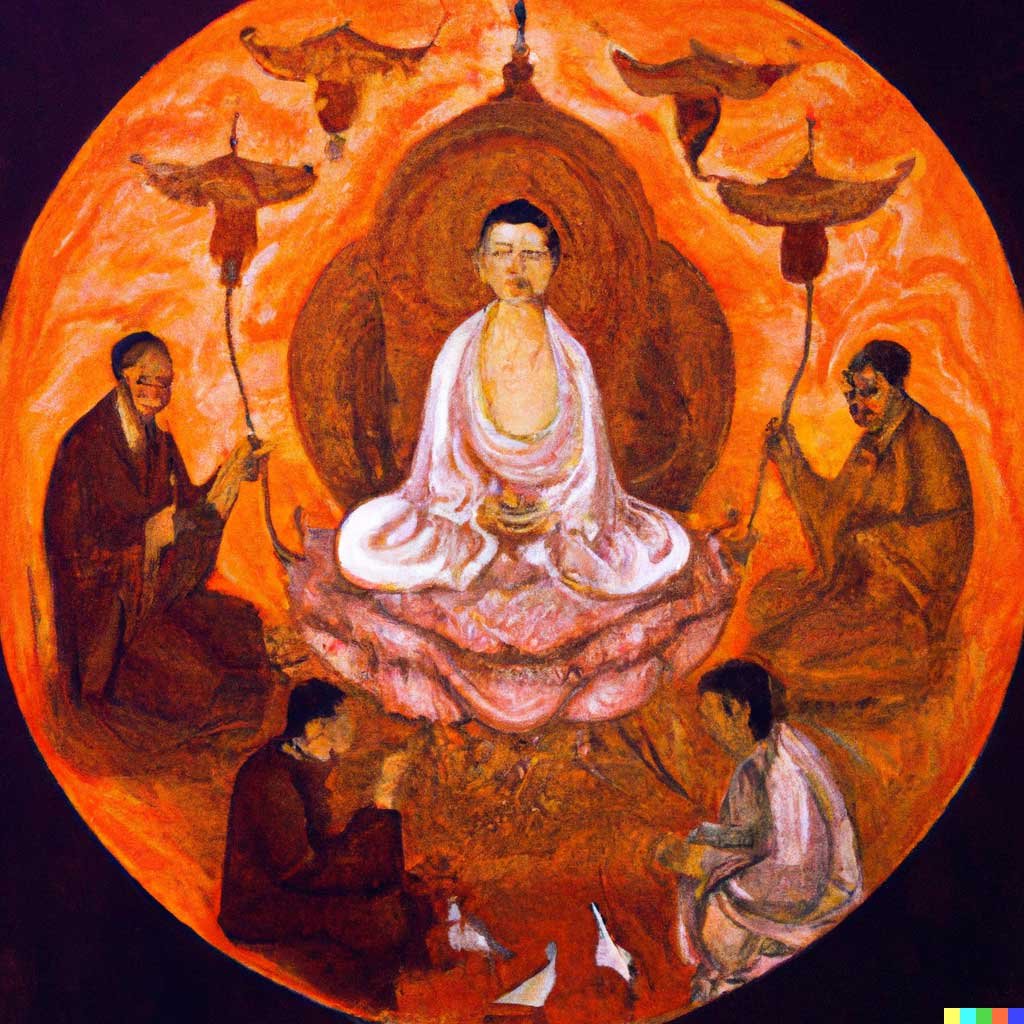This essay is the first in a series where we take a close look at four of the world’s major religious traditions.
Spirituality, as a universal human experience, is often elusive and difficult to put into words. It’s a broad concept with various interwoven dimensions, often linked to seeking ultimate meanings, existential questions, and the pursuit of an elevated state of consciousness. It’s our attempt to understand our place in the cosmos, decipher life’s mysteries, and connect with something greater than our individual selves. Throughout history, religions have been born from this innate spiritual quest, providing paths and practices to navigate the vast ocean of existential enigma. In this series, we will delve deep into four of the world’s major religions: Buddhism, Hinduism, Christianity, and Taoism, illuminating the shared human yearning for spiritual fulfillment.
Definition and importance of spirituality
Spirituality is an aspect of human experience involving a sense of connection to something bigger than ourselves, often involving a search for meaning in life. It’s a broad concept, open to interpretation, often associated with a process of personal transformation and self-realization. As such, it’s not easy to define spirituality with precision; however, it’s importance lies in its universality and its capacity to give direction and purpose to human life1. Spirituality often incorporates practices that cultivate an inner sense of peace and happiness, leading to a healthier and more balanced life. Importantly, it allows for personal interpretation and discovery, encouraging individuals to explore and define their own spiritual path.
Brief overview of world religions
World religions, as manifestations of human spirituality, provide comprehensive belief systems, ethical guidelines, and communal rituals that have shaped societies and cultures throughout history. They are, in many ways, a collective spiritual journey, reflecting our shared need for understanding, community, and transcendence2. There are many different religions in the world, each with its own unique beliefs and practices. They may be broadly grouped into several categories, including monotheistic religions (like Christianity, Judaism, and Islam), polytheistic religions (like Hinduism and certain forms of Buddhism), and philosophic religions or philosophies (like Taoism and Confucianism).
Introduction to Buddhism, Hinduism, Christianity, and Taoism
This series will focus on Buddhism, Hinduism, Christianity, and Taoism, four distinct religions that offer different approaches to spirituality. Buddhism, originating from the teachings of Siddhartha Gautama, or the Buddha, offers a path of personal transformation through mindfulness and ethical living3. Hinduism, one of the world’s oldest religions, offers a complex system of beliefs and practices, encompassing many different gods, sacred texts, and rituals4. Christianity, based on the teachings of Jesus Christ, offers a path to salvation through faith and the practice of love and charity5. Lastly, Taoism, a philosophy and religion originating in ancient China, offers a path of harmony with the Tao, the natural, spontaneous process of the universe6.
Historical contexts of these religions
Understanding the historical context of these religions is vital as it sheds light on their development and influence. Buddhism emerged in the 5th century BCE in India, a time of great religious and philosophical exploration7. Hinduism’s roots stretch back to the ancient Indus Valley civilization, around 2000 BCE, evolving over centuries into a complex system of beliefs and practices8. Christianity arose in the 1st century CE in the Roman province of Judea, spreading throughout the Roman Empire and beyond9. Taoism emerged around the 4th century BCE in China, profoundly influencing Chinese culture and philosophy10.
Importance of prayer and meditation in these religions
Prayer and meditation are integral practices in these religions, providing a direct link between the individual and the divine or the ultimate reality. They serve as essential tools for spiritual growth, self-discovery, and transformation. In Buddhism, meditation serves as a tool for attaining enlightenment11. Hinduism incorporates both prayer and meditation as part of its spiritual practices[^12^]. In Christianity, prayer is a vital practice, serving as a direct line of communication with God[^13^]. Taoism also emphasizes meditation, particularly practices that promote harmony with the Tao[^14^].
Transformative effects of following these religions
Adhering to these religions can have profound transformative effects on individuals and communities. They provide ethical frameworks that guide behavior, promote moral living, and instill a sense of purpose and direction. By offering techniques for introspection and self-improvement, such as prayer and meditation, they facilitate personal growth and transformation. Importantly, these religions offer a sense of belonging and community, fostering social cohesion and mutual support[^15^].
Teaser for the upcoming series
In this series, we will dive into each of these religions, exploring their core beliefs, practices, and historical development. We will explore how they address life’s biggest questions, how they guide their followers in their spiritual journeys, and how they shape societies and cultures. Through this exploration, we will gain a deeper understanding of human spirituality and the diverse paths we take in our quest for meaning and fulfillment.
Conclusion
Religion and spirituality, though vast and complex topics, are a testament to our collective desire to understand and navigate the mysteries of existence. This series will serve as a journey into Buddhism, Hinduism, Christianity, and Taoism – a venture into the heart of human spirituality. As we take this journey, we will see that despite our many differences, we share a common yearning for connection, understanding, and spiritual fulfillment. We hope that you will join us on this exciting exploration of spirituality and world religions.
PART TWO:
References
Footnotes
- Mayo Clinic. (2020). Spirituality and stress relief: Make the connection. Retrieved from https://www.mayoclinic.org/healthy-lifestyle/stress-management/in-depth/stress-relief/art-20044464 ↩
- Britannica. (2021). Religion. Retrieved from https://www.britannica.com/topic/religion ↩
- BBC. (2009). Religions – Buddhism. Retrieved from https://www.bbc.co.uk/religion/religions/buddhism/ ↩
- BBC. (2009). Religions – Hinduism. Retrieved from https://www.bbc.co.uk/religion/religions/hinduism/ ↩
- BBC. (2009). Religions – Christianity. Retrieved from https://www.bbc.co.uk/religion/religions/christianity/ ↩
- Britannica. (2021). Taoism. Retrieved from https://www.britannica.com/topic/Daoism ↩
- Britannica. (2021). Buddhism. Retrieved from https://www.britannica.com/topic/Buddhism ↩
- Britannica. (2021). Hinduism. Retrieved from https://www.britannica.com/topic/Hinduism ↩
- Britannica. (2021). Christianity. Retrieved from https://www.britannica.com/topic/Christianity ↩
- Stanford Encyclopedia of Philosophy. (2016). Daoism. Retrieved from https://plato.stanford.edu/entries/daoism/ ↩
- Frontiers. (2014). The psychological effects of meditation: A meta-analysis. Retrieved from https://www.frontiersin.org/articles/10.3389/fpsyg.2014.01250/full ↩
